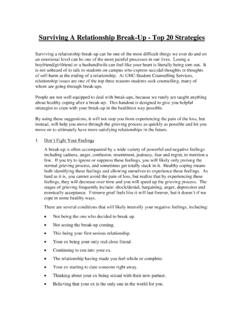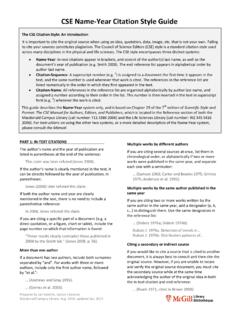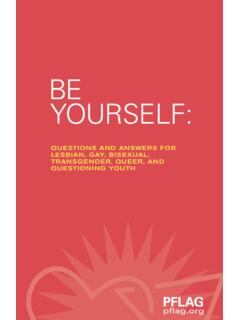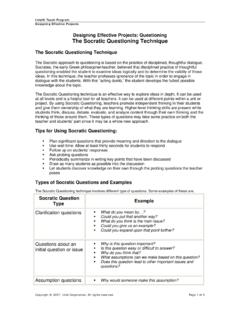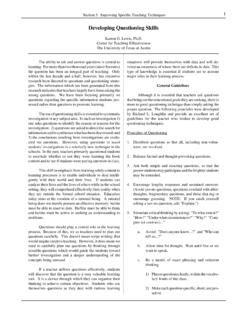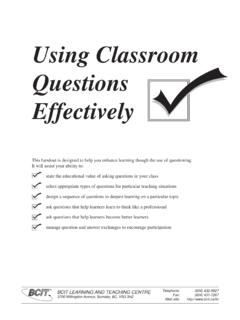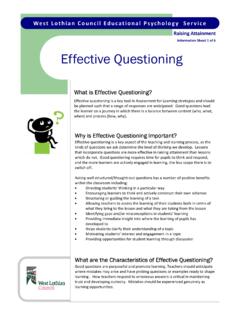Transcription of Active Listening and Effective Questioning - McGill University
1 White Paper Active Listening & Effective Questioning 1 This work is licensed under a Creative Commons Attribution Unported License. For more White Papers see: Active Listening Listening is a conscious activity which requires attention. Rather than waiting to speak, you need to listen attentively to fully understand the other person. Remember, there is no point in asking a question if you do not intend to listen carefully to the answer! Listening fully - or actively means putting everything else out of your mind and acknowledging the other person so they have feedback that you are Listening properly and valuing what they have to say1.
2 Understanding and valuing does not mean agreeing; Active Listening is particularly valuable in situations of conflict2 or disagreement where if the other party feels you understand their viewpoint, an atmosphere of cooperation can be created which increases the possibility of resolving the conflict. Active Listening is a structured way of Listening and responding to others: Source Some of the key skills for Active Listening include: Listen with your whole body: o Face the other person and use an open posture to establish rapport o Use eye contact and facial gestures to demonstrate your attention o Be still and resist fidgeting 1 For more on communication theory see: 2 For more on managing inter-personal conflict see: White Paper 2 This work is licensed under a Creative Commons Attribution Unported License.
3 For more White Papers see: Let the other person do the talking: o Be quiet and actively encourage the other person to talk; promote their willingness to communicate; o Avoid interrupting; o Avoid pre-judging what s being said (rather, make sure you focus on understanding precisely what the speaker means); o Avoid starting to think about your answer or response (wait until the speaker has finished - Active Listening is hard work and needs 100% of your concentration); o Don t finish their sentences or fill in the blanks no matter how tempting! Notice non-verbal communication ie, body language, tone and pitch of the voice listen for feelings and emotions3 as much as facts and words.
4 Be comfortable with silence. Staying silent gives time and opportunity for the speaker to share extra information. It may feel odd initially, but you will be amazed how often more information emerges after a moment s silence. Listen inquisitively and strategically: o Inquisitive Listening - actively looking for interesting bits of information in what is being said that will help formulate a solution or answer; o Strategic Listening - going beyond the words to understand the speakers real motivations and driving forces and/or needs. This involves Listening between the lines and hearing the things that were not said as well as those that were.
5 Use questions effectively (see below). Reflect back the information you receive to illustrate your understanding and provide opportunities for clarification. Use paraphrasing, acknowledgment and reflective statements. Some common mistakes made by people who think they are actively Listening , but aren t really, include: Cursory Listening ; just going through the motions but the listener is either multi-tasking or not really interested in what s being said. Shallow Listening ; the listener believes they already know what the speaker is leading to and already knows the answer or what they are going to say next. This type of Listening is often underpinned by arrogance and the listener fails to hear what is actually being said.
6 Active Listening takes time and focus to achieve; used effectively it opens up a whole new level on which to communicate and build relationships. Effective Questions Albert Einstein said, If I had an hour to solve a problem and my life depended on the solution, I would spend the first 55 minutes determining the proper question to ask, for once I know the proper question, I could solve the problem in less than five minutes. Far too many people focus on having the right answer rather than discovering the right question 4. In Germany, the job title Direktor Grundsatzfragen translates as Director of Fundamental Questions. These are the people who are always thinking about what the next questions will be.
7 The German understanding and appreciation of Grundsatzfragen stems from a culture that highly values philosophy and the ongoing Questioning of priorities and the meaning of life. We can all benefit from adopting this approach to thinking, which makes asking Effective questions a key skill to develop. A powerful question: 3 For more on emotions see: 4 See Good questions outrank easy answers: White Paper 3 This work is licensed under a Creative Commons Attribution Unported License. For more White Papers see: generates curiosity in the listener stimulates reflective conversation is thought-provoking surfaces underlying assumptions invites creativity and new possibilities generates energy and forward movement channels attention and focuses inquiry stays with participants touches a deep meaning evokes more questions.
8 It has the capacity to spread beyond the place where it began into larger networks of conversation throughout an organization or a community. Powerful questions that travel well are often the key to large-scale change. But this is not straightforward; whilst asking and answering questions is part of everyday conversation for all of us and we might think that Questioning is a natural skill that we all possess; it is not as easy as we assume. Questions need to be designed to help the other person reach a conclusions, or to provide information and insights helpful to the discussion. There are a range of question types that can be used for different purposes.
9 Some questions provide structure, others direct flow, and some help us to reach closure. Question types include: Open questions, to gather information and facts, for example "What are your concerns and worries about this situation?" Probing questions, to gain additional detail, "Can you explain why that matters?" Hypothetical questions, to suggest an approach or introduce new ideas. An example might be "If you could get additional funding or resources, how might that help?" Reflective questions, to check understanding, such as "So would you prioritise the most critical areas for attention first and make sure that everyone knew what was most important?
10 " Leading questions5, to help a person reach a conclusion or have an idea that you feel will be beneficial; a few well planned questions can very often lead the person towards the idea and instead of responding to your request, they have their idea of how to help you be more successful. Deflective questions to defuse an aggressive or defiant situation by redirecting the force of the other person s attack instead of facing it head-on. Attacks are synonymous with dissatisfaction, insubordination or resistance and prevent you from moving forward. Dealing with a strong objection by responding with similar force creates conflict. Deflective questions help to transform the negative situation into a collaborative problem-solving6 occasion.
